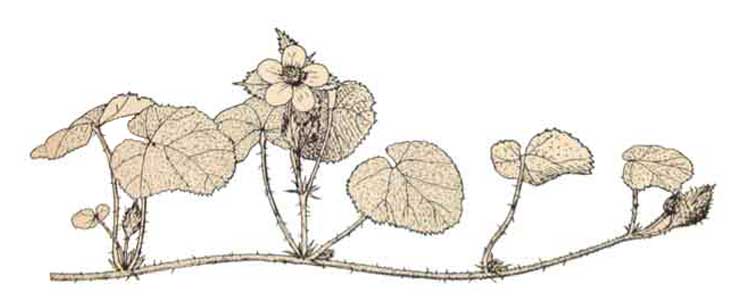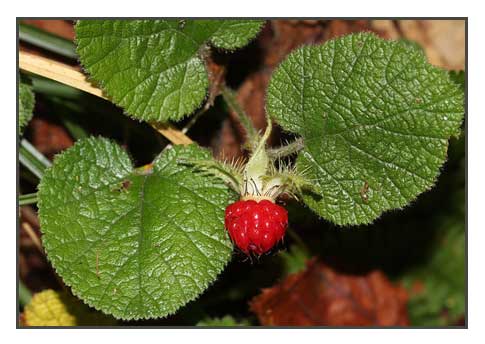
Family • Rosaceae
Atibulnak
Rubus pectinellus Maxim.
Huang pao
| Scientific names | Common names |
| Calyctenium pectinellum (Maxim.) Greene     Unresolved | Apukid (Bontok) |
| Rubus pectinellus Maxim. | Atibulnak (Tag.) |
| Rubus pectinellus var. trilobus Koidz. | Bagalbalan (Bagobo) |
| Balinana (Mangalay) | |
| Bana (Igorot) | |
| Pinit (Ifugao) | |
| The species is closely related to Rubus calycinus. | |
| Rubus pectinellus Maxim. is an accepted name The Plant List | |
| Other vernacular names |
| CHINESE: Huang pao, Jiao xu mu. |
| JAPANESE: Kobano fuyuichigo. |
Distribution Availability |
© Godofredo U. Stuart Jr., M.D. / StuartXchange |
August 2018
![]()
 |
| IMAGE SOURCE: Photograph: Leaves and fruit / Rubus pectinellus / Alpsdake / 22 September 2014 / CC BY-SA 4.0 / click on image to go to source page / WIKIMEDIA |
| OTHER IMAGE SOURCE: Digitally modified image from Minor Products of Philippine Forests / Vol 1 / Philippine Mangrove Swamps / William Brown and Arthur Fisher / Plate XIV / Heritiera littoralis (Dungon-late) / 1920 |
Sources and Suggested Readings |
• |
DOI: It is not uncommon for links on studies/sources to change. Copying and pasting the information on the search window or using the DOI (if available) will often redirect to the new link page. (Citing and Using a (DOI) Digital Object Identifier) |
| Â Â Â Â Â Â Â Â Â Â Â Â Â Â Â Â Â Â Â Â Â Â Â Â Â Â Â Â Â Â List of Understudied Philippine Medicinal Plants |
• |
 |

 Gen info
Gen info Botany
Botany